Hello,
I think to realize a modular model railway in 1:32 scale (in Italy) in cooperation with a friend of mine. We decided to place a segment turntable in this project, so I realized the project with CAD and I decided to make turntable by laser cutting. The material is iron, the bridge is 1mm thickness, the pit is 4mm. Welds are made with tin or silver alloy in the most stressed parts. The pit is electrod welted.
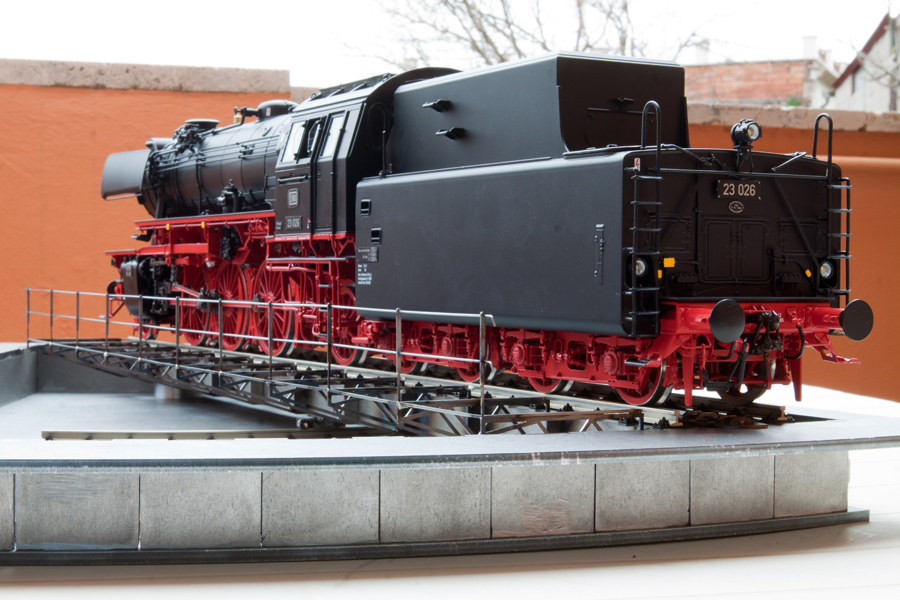
All is made by a modular design, so the bridge can be longer or shorter and the pit can have a greater or lesser angle of rotation, based on requests.
This bridge is 610mm long and has a rotation of 24° (in this particular pit). Here are some pictures:
Bridge view

Pivot pin moves on a 32mm ball bearing.
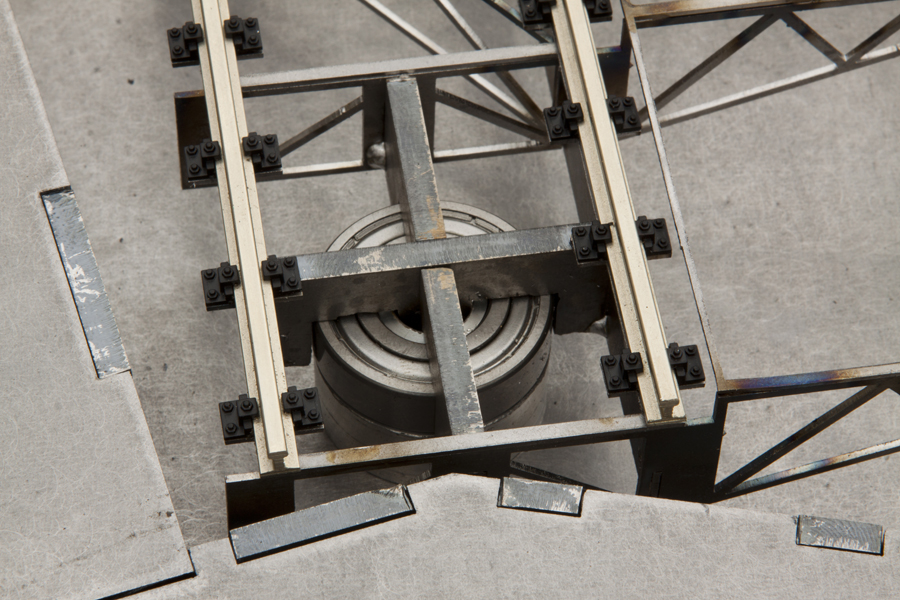
General rotation takes place on two carriages to spread the weight of locomotives in a better way.
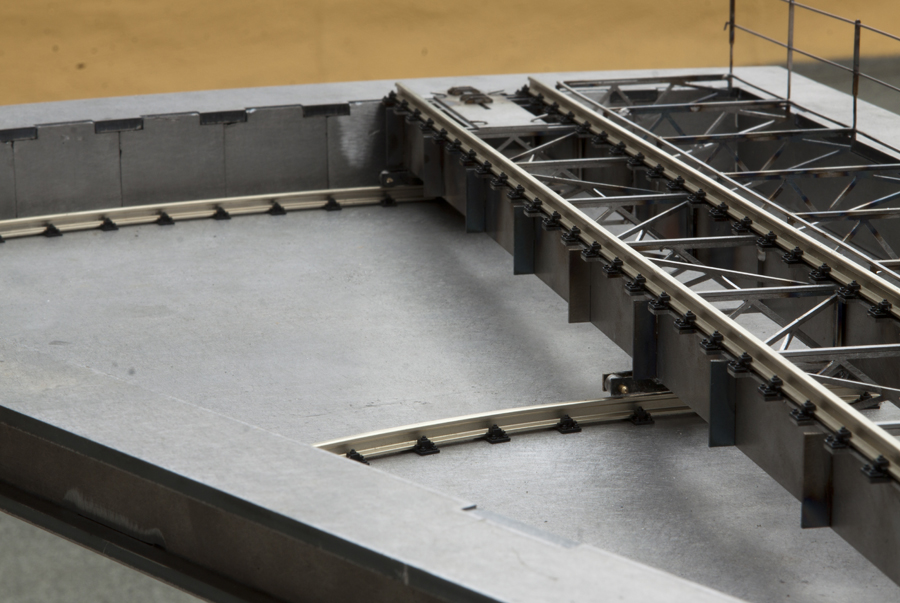
To have a flowing rotation, the carriages are equipped with micro ball bearings (5mm diameter). Each carriage has 2 ball bearings, so the bridge has 8 ball bearings on 4 carriages.
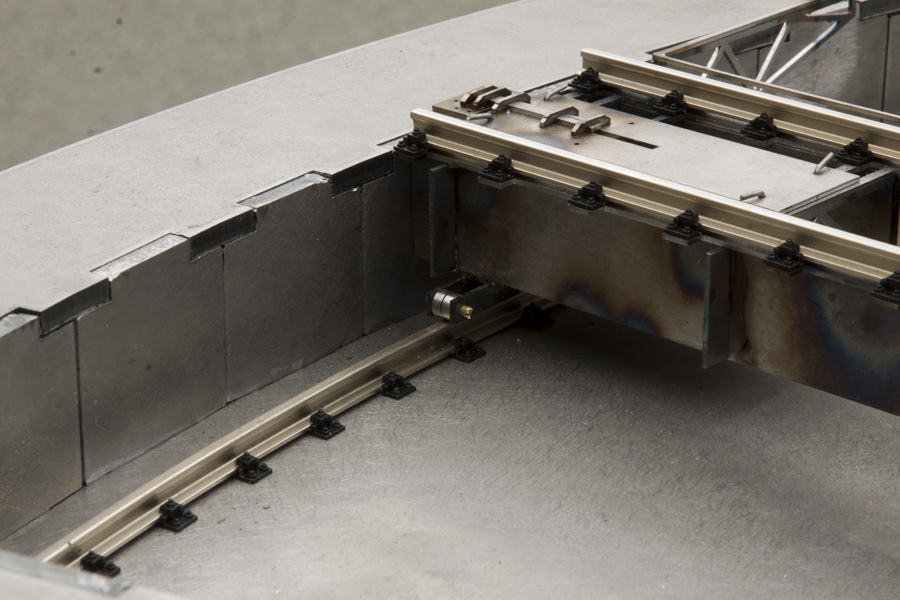
The ball bearings rotate on 2mm brass pin, locked in position by 2,5mm exagonal nuts made by me with lathe and mill machines. They have a good realism.
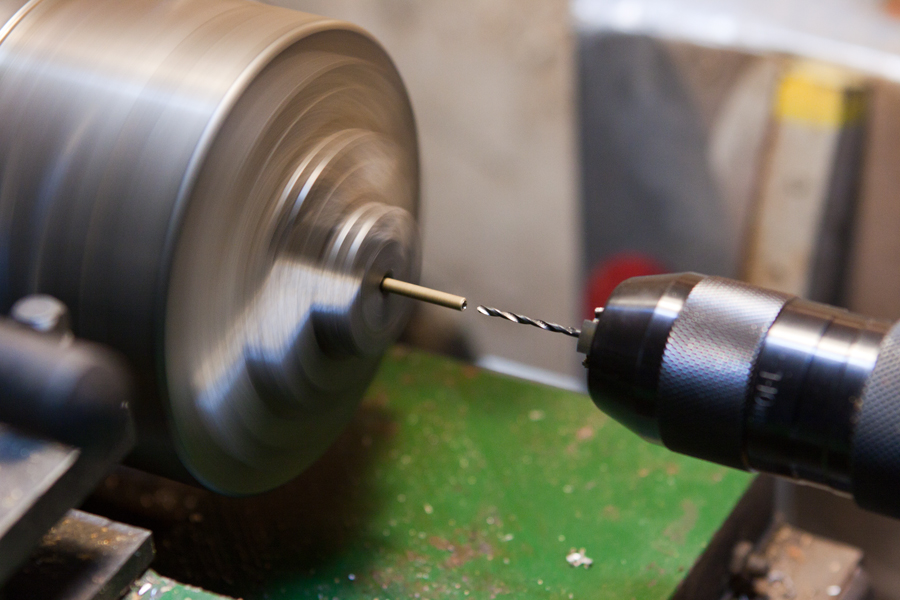
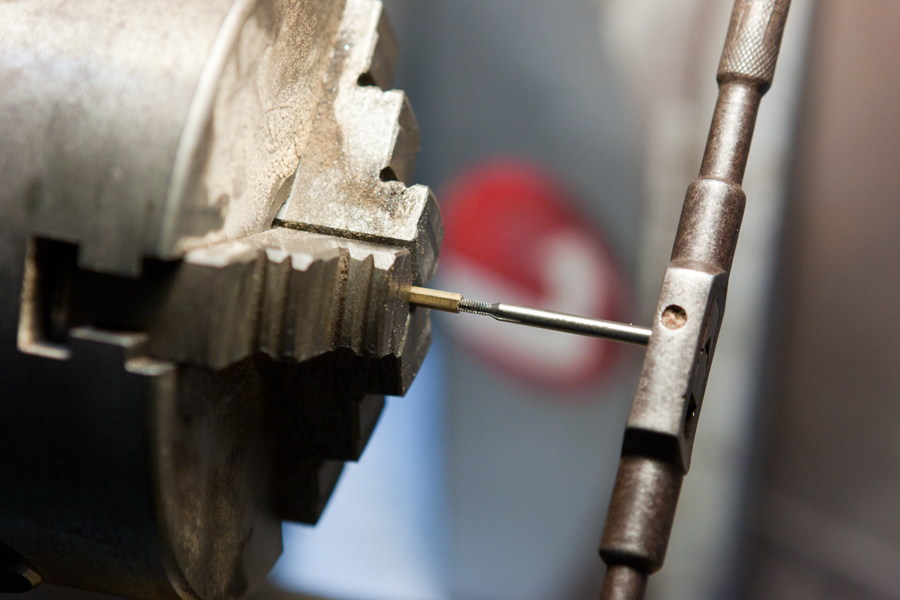
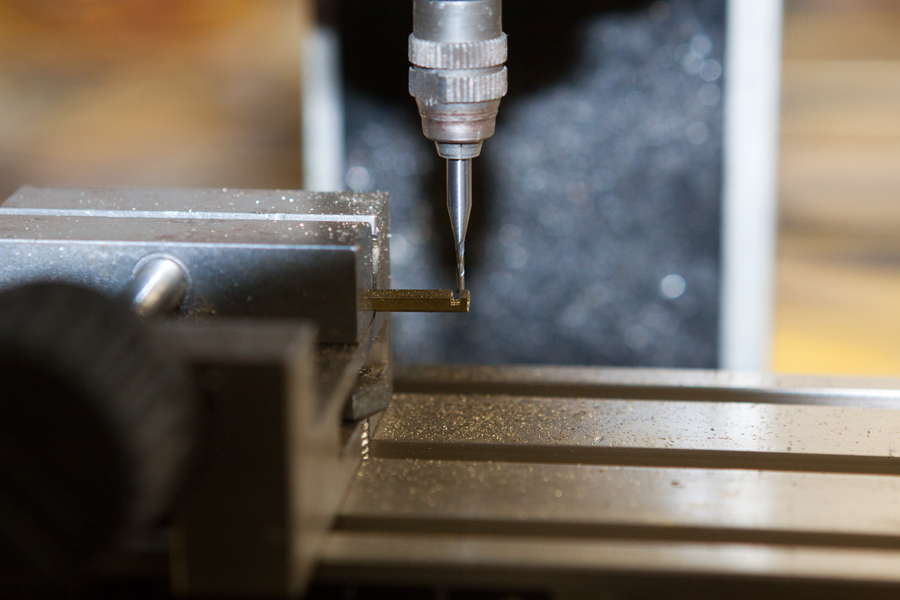
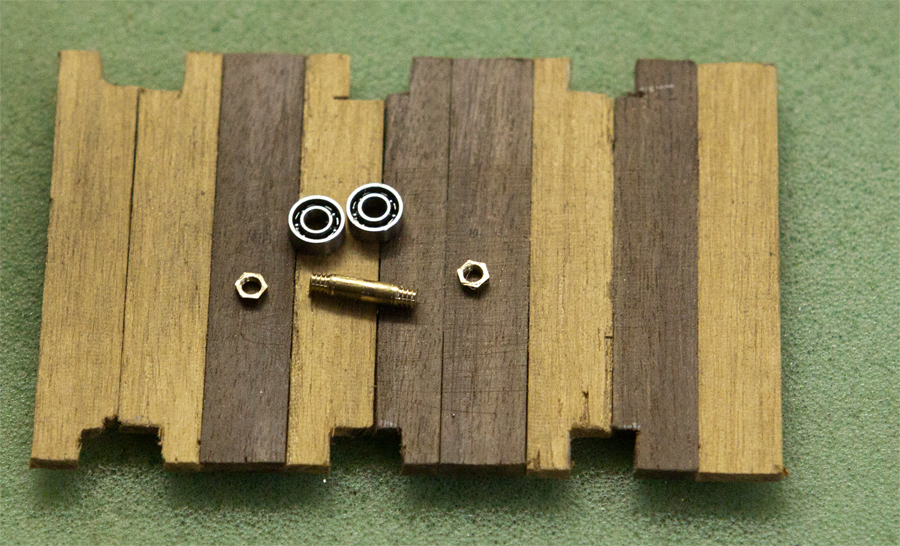
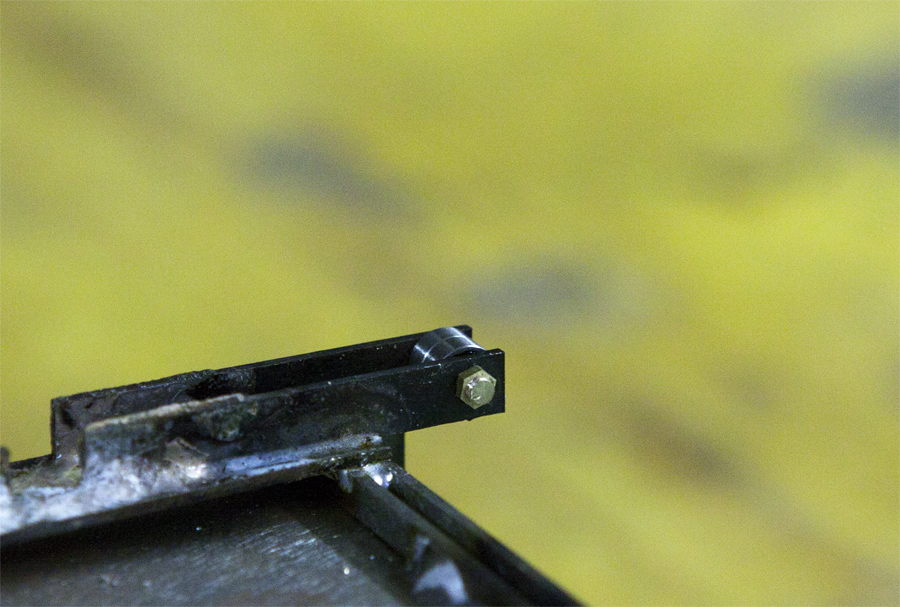
Locking system will be fixed to the bridge by M1 micro bolts. It will be controlled by a small servo.
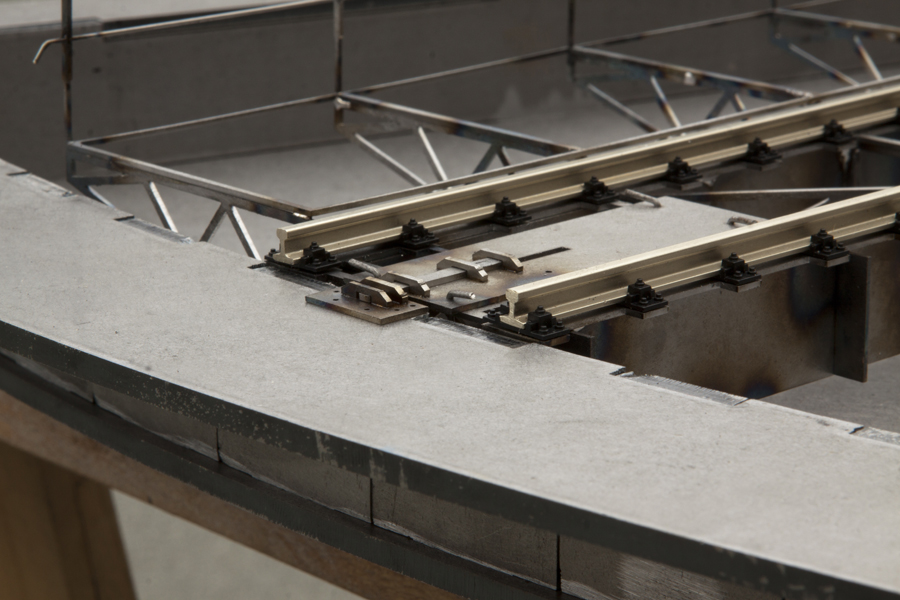
Locking system detail.
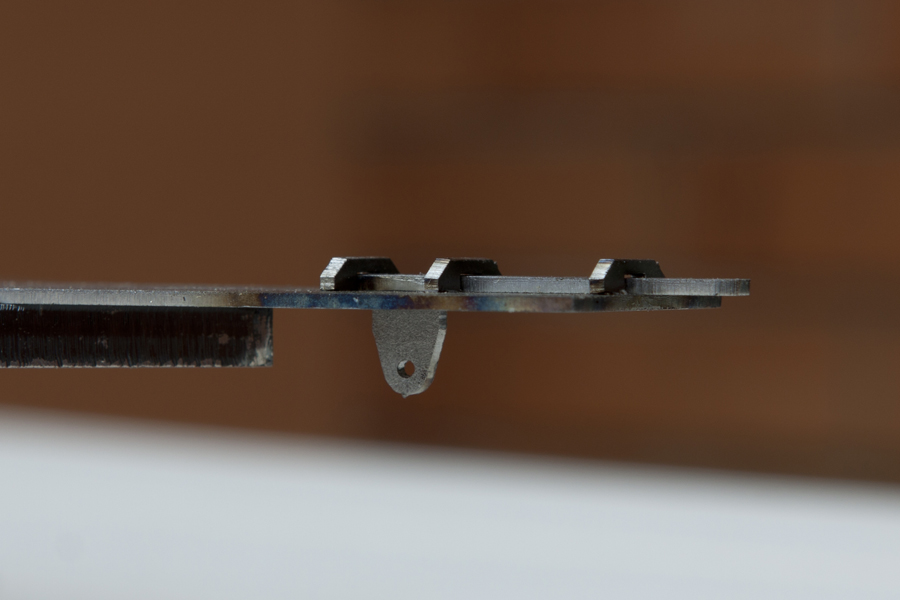
Two general views of bridge and pit structures together:
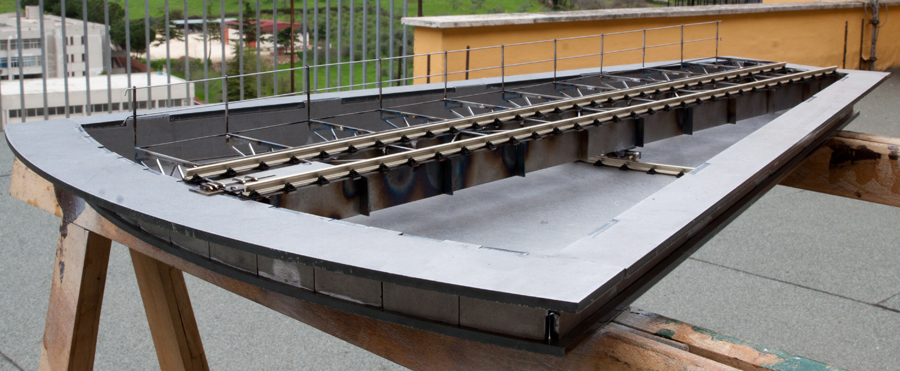
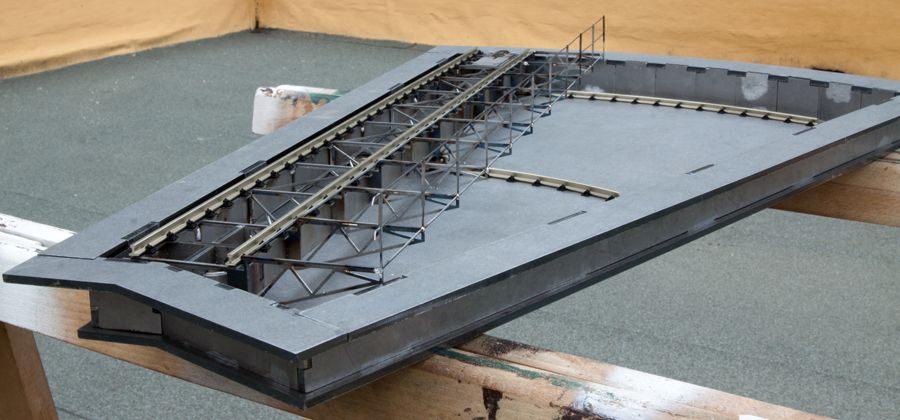
Wooden boards
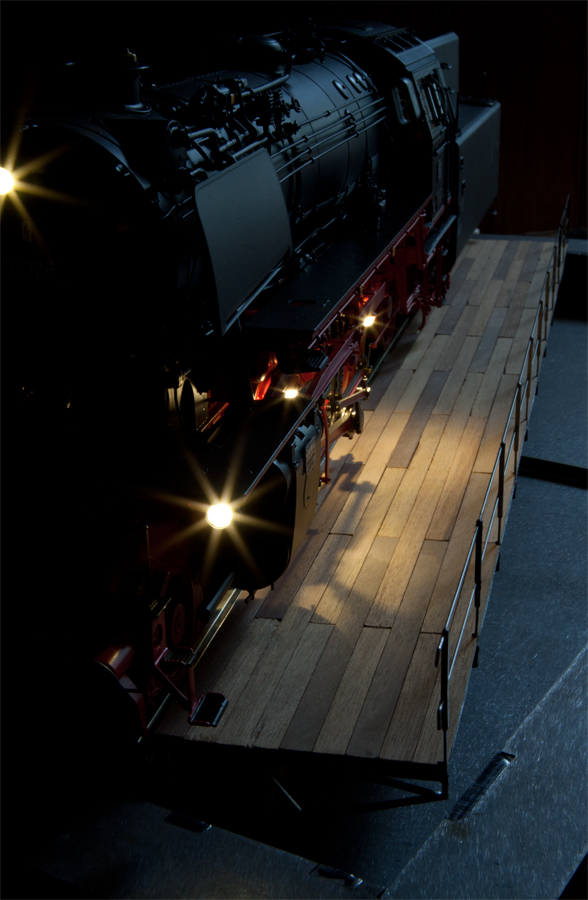
Another general view with BR23 on:
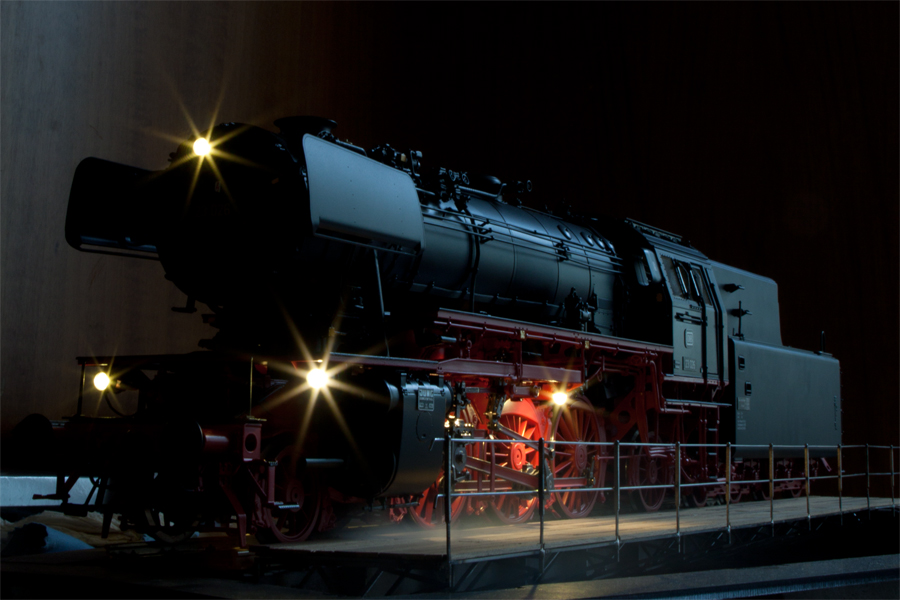
Gruß
Antonio